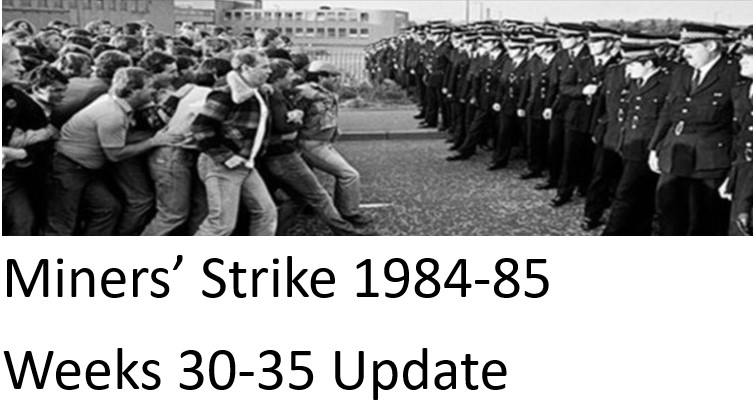 Miners’ Strike 1984-5 – Weeks 30-35 Update
Miners’ Strike 1984-5 – Weeks 30-35 UpdateThroughout this 40th anniversary year of the miners’ strike, Left Horizons will publish regular bulletins on important issues and developments that occurred during the strike, month by month.
This update covers events between 21 September and 2 November.
******
This period was dominated by the impact of the strike ballot by the National Association of Colliery Overmen, Deputies and Shotfirers (NACODS) – the union of supervisory and safety staff in the pits. The weeks between the huge majority vote for a strike in September and the highly suspicious circumstances in which the strike was called off were ones of excitement and hope and then of those hopes being dashed.
It also saw the NUM present their case to the national Labour Party conference in early October, against the backdrop of increasing financial persecution of the union and its leaders in the courts and a massive intensification of the use of scab lorry drivers to move coal stocks to power stations.
Of course, the IRA’s bomb at Tory Party conference, aimed at assassinating Thatcher, also took place during these weeks, playing right into the hands of the repressive state machine and their media supporters.
NACODS ballot
Although NACODS members had previously voted by 54% to strike, that fell short of their rule-requirement for a two-thirds majority for strike action. These supervisory staff had only been going down those pits where miners were on strike in order to carry out essential safety work. However, the government were now suggesting that NACODS members must actually cross NUM picket lines or lose pay. As most of their members lived in mining communities, and many were related to striking miners and part of that strong culture, this caused enormous resentment.
On 12 September, to the alarm of the Tories and the bosses, NACODS called another ballot on strike action. If supervisors and safety officers went on strike it could close every pit in the country, even in those areas that were still working. This alarm turned to absolute panic on the 28 September. No less than 82.5.% of their members voted to strike!
In the mining communities, this provided an enormous boost to morale. It was widely believed that this could finally win the strike and force Thatcher to back down. The very next day the NUM and the National Coal Board (NCB) agreed to “exploratory talks” under the Advisory, Conciliatory and Arbitration Service (ACAS) and later these talks included NACODS.
High Court writ at Labour Conference
And yet, incredibly, on 1 October, an official of the High Court marched right into Labour Party Conference itself and served a writ of contempt of court on Arthur Scargill himself, as well as Peter Heathfield, the General Secretary, Mick McGahey, the NUM Vice-president and some other officials. The writ even threatened Scargill with potential imprisonment!
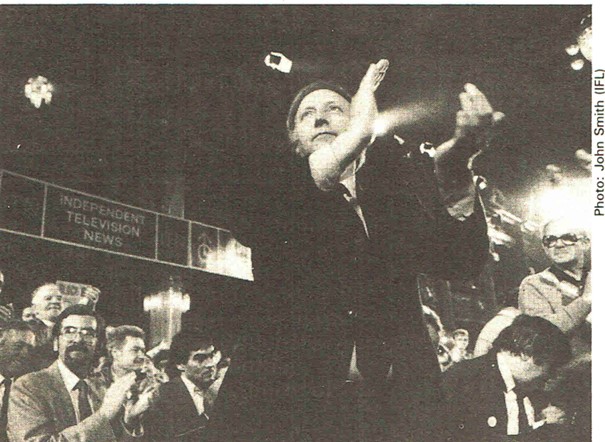
[photo Militant 5 October 1984- John Smith IFL]
The contempt could only be “purged” if the NUM publicly apologised for refusing to agree with the judge that the miners’ strike was not official and undertook not to condemn or take any action against those breaking the strike [Militant 5 October]. That very evening, courageously, the NUM Executive met to confirm that the strike was official!
A five-day extension was granted on 4 October, but on 10 October, the NUM was fined £200,000 and again found in contempt. However, the threat of imprisonment of union officials was never carried out. The Tories were fully aware of the extremely serious consequences such action would have in terms of galvanizing the Labour movement in taking solidarity action in support. Instead, accountants were employed to work night and day to ferret out the NUM’s funds and seize them for the state.
At Labour Party conference, apart from the legal drama, Scargill received a rapturous reception, including standing ovations before and after he spoke. He defiantly declared that there were no such things as “uneconomic pits”, just pits “starved of investment” [Militant 5 October]. The NUM motion was overwhelmingly passed, along with an “NEC statement”, in a session summed up on behalf of the NEC by Tony Benn.
“Life will never be the same”
Just as at the TUC conference, Eric Hammond of the EETPU (Electrical and Plumbing union) made a scurrilous speech, greeted with hostility by delegates, but before he spoke, Theresa Wrack, the delegate from Dulwich CLP got in to speak. She spoke about the women in the strike: –
“Thousands of women have become active in the course of this dispute. The common cause of working-class men and women has been spelt out in practical example; life will never be the same for these women. The eyes of the miners, their wives and the most active parts of the labour movement will be on this conference and will be looking for the Labour Party leadership to give a lead.”
[Militant 5 October]
It was clear that the example of the miners’ heroic struggle had inspired and radicalised delegates. Such was the mood among delegates that even Neil Kinnock, the Labour leader, felt he had to place at least some of the blame for the violence on the Tories and even criticised the police. He offered little in the way of opposition to the logic of capitalism in its attacks on working-class people, preferring, instead, to blame “Thatcherism” in more personal terms.
The conference passed two motions, both against the leadership’s recommendation, one calling for the police to be removed from “industrial disputes”, and the other calling for the right of the police to join unions and for elected police committees to have responsibility for “operational questions”.
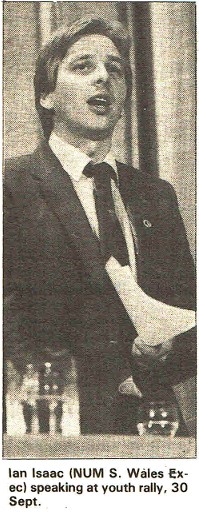
The NEC moved left, as Eric Clarke from the Scottish NUM replaced a Steelworkers union (ISTC) rep. Right winger, John Golding was defeated and Sam McCluskie, of the Seamen’s Union was elected party treasurer. The day before conference saw 1,200 attend the Labour Party Young Socialists Rally for the miners, with many young miners in attendance. It was addressed by Ian Isaac from St John’s Lodge in South Wales, as well as Tony Benn and Dennis Skinner. [Ian Isaac’s book on the strike is reviewed here].
The Tories were pursuing a multi-strand strategy. The possibility of a NACODS strike led to them agreeing to open yet another set of talks, all the while using the courts to victimise those miners’ leaders who were conducting such talks and trying might and main to destroy the NUM financially. Most amusingly, in spite of endless whining about the NUM not calling a national ballot, they were desperately urging the NACODS leaders to ignore the 82% national yes vote for a strike! It is almost as if they were not true democrats after all!
Coal stockpiles
Crucially, they also used this time between the successful NACODS strike ballot and the calling of the actual strike to rapidly and massively increase deliveries of coal transported from the stockpiles and from open-cast mines by scab lorry-drivers. Open cast mines were not directly involved in the dispute but the transport union (TGWU) had agreed not to move coal from that source, but there were signs that even some TGWU members were defying their union’s instructions.
There was a sudden, sharp increase in coal stocks to 15 million tonnes (up from 14 million in September), possibly imported via small ports. Even if NACODS members went on strike and stopped all coal production, the stocks could last until Christmas. Unless the lorry deliveries were brought to a halt, the power stations could carry on way beyond that [Militant 19 and 26 October].
It was clear that that government was playing for time in fake negotiations while preparing to break the strike completely. There were calls for NACODS to implement their strike mandate immediately. The ballot was started on 12 September and result declared on the 28, yet it was not until 17 October that the strike was actually was called, to start on 25 October!
This was only after the NCB boss, MacGregor said of ACAS, “this place stinks!” and walked out of negotiations a few days later, on 15 October, even though the unions had agreed to two possible solutions to the dispute put forward by ACAS [National Justice for Mineworkers website]. All this play acting from the bosses was just to buy time for them to prepare themselves for the future battles.
Murky picture
But the picture then becomes much more murky. Arthur Scargill, in a recent speech in 2024 (read here), reported a conversation he’d had on 17 July 1992 at Channel 4 with Tory Minister Alan Clark, who was close to Thatcher. He told Scargill that around 22 October 1984, Thatcher called an Emergency Committee meeting and was preparing to settle on the ACAS terms. Significantly, Michael Eaton had been brought in to replace MacGregor in the Public Relations role at the NCB two days before. Scargill explained: –
‘“Three days later”, Clark said, ”Margaret [Thatcher ed.] reconvened the Emergency Committee and said: ‘Panic over – we’ve arranged with NACODS and the NCB to accept an amended colliery review procedure and they’ve agreed to call off their strike when they meet again at ACAS”
‘Alan Clark went on to say that he’d never been able to understand why, when the strike had been effectively won by the NUM, NACODS called off its strike. I replied: “I take the same view”’.
The leaders of NACODS, in discussions at the TUC headquarters, called off the strike on 25 October and inexplicably settled for a meaningless, revamped colliery-closure review procedure, which everyone knew was not worth the paper it was printed on, and did nothing to stop the subsequent decimation of the industry.
As Scargill makes clear in the same speech in 2024: –
“No explanation has ever been given by NACODS for this U-turn, or sell-out, which had terrible historical consequences, leading as it did to the destruction of Britain’s deep-coal-mining industry.” [see above]
It is all the more mysterious as the TUC negotiating team of union leaders, Norman Willis, Ray Buckton and David Basnett were apparently urging NACODS to stand firm. However, it emerged 20 years later, when Cabinet papers were released, that the Tories had an informant in the TUC [see here] as well as other security service involvement in the NUM itself.
Crushing disappointment
Whatever the truth behind this disastrous decision, it came as a crushing disappointment to the striking miners, their families and the mining communities, as well as to all their supporters, after their hopes had been raised so high.
Once NACODS had called off the strike, the Tories lost no time in pressing home their advantage. On 26 October the High Court ordered the total sequestration (ie seizure) of NUM funds and, two days later, made 24 members of the NUM executive personally liable for the original £200,000 fine. It was clear that the government now intended to fight to the finish.
On 12 October, the IRA had detonated a bomb at the Grand Hotel at Brighton, in the middle of Tory Party conference, killing five people and coming close to killing Thatcher herself. This was a stupid and entirely counter-productive act that simply helped to strengthen the state’s repressive apparatus. It did nothing to achieve the Republican aims in the north of Ireland and it helped to intensify the mood of wild extremism in the media, which treated miners and terrorists as if they were part of one larger threat.
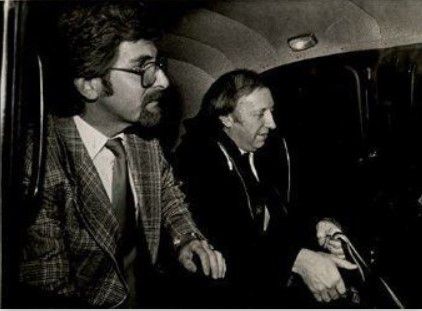
This became even worse at the end of October when the press and TV were full of accounts of the NUM being funded from Libya, under Colonel Gaddafi, after a photo was published of the NUM National Treasurer, Roger Windsor, meeting him. This was particularly damaging given the Libyan regime’s shooting of a British policewoman from the Libyan embassy seven months earlier. Of course Kinnock and the TUC’s Norman Willis were more than ready to jump on the bandwagon and condemn the NUM.
Many years later, the allegations were found to be untrue. They had hinged on the testimony of Windsor, who was later widely suspected of having a close relationship (which he denies) with the security services. Seamus Milne’s book The Enemy Within is essential reading on the subject [Verso Books – 1994, 2004, 2014]. But the damage was done and all these issues seriously weakened public support for the strikers.
The police continued to brutalise mining communities and miners were subject to much higher penalties in court for strike-related activities. Chris Herriot from Monktonhall colliery in Midlothian, for example, was fined £400 pounds for a simple “breach of the peace”, when the usual fine was between £10-20. Many miners who went to court were subsequently sacked by the NCB. The issue of sacked miners was to become a major issue and miners all over the country declared that they would not return to work unless they were reinstated.
“Where is the real violence?”
As one miner, Steve Sullivan from Sutton Manor NUM in Lancashire said: –
“miners killed, on life-support machines, skulls fractured, thousands injured – and only a handful of police injured. Where is the real violence!”
[Militant 26 October]
Battles were now taking place around coal being scavenged from the ground or from slag heaps by miners’ families. The bosses started to clamp down on this traditional activity in mining communities, just as winter was round the corner.
In Grimethorpe, Yorkshire, a woman who was suffering from terminal cancer, together with her daughters, were fined £40 each for “stealing” tiny amounts of waste coal. As part of the wider clampdown, the Metropolitan police, including mounted police and dogs, fought a pitched battle on the nearby slag heap with local people. Those arrested were kept for three and a half hours before receiving medical assistance, including one young miner with extensive head injuries. The village was then regularly patrolled by police in riot gear, enforcing a 7pm curfew. [Militant 26 October].
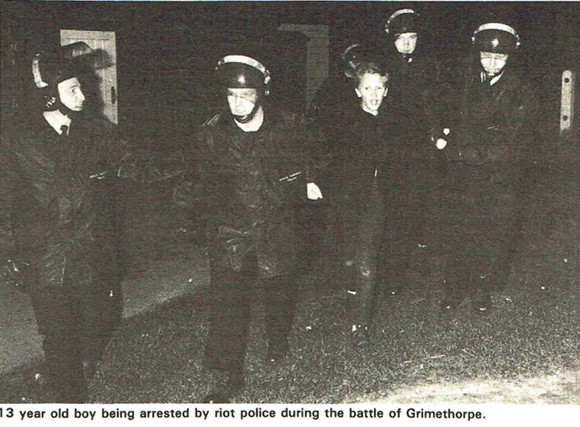
A visitor to Grimethorpe, Julie Harris from Poole CLP, in Dorset, reported “horrendous conditions”. The local NUM kitchen could only afford to give food parcels to single men, who were receiving nothing in benefits. One woman was only five stone in weight and her husband only seven. Their grand-daughter was a baby who had a milk allergy and who needed special (and more expensive) food but had been unable to get it. Julie Harris undertook to send it through from Dorset. Fifteen miners’ children were taken back to Poole for a holiday. [Militant 26 October].
Deliberate cruelty
Reports were coming in from across the country of deliberately cruel decisions being taken by the ‘social security’ officials. Vic Symonczyk was denied a grant for things for his new baby, such as nappies or a cot. That baby later died and the family was refused a funeral grant for a burial. The officials only relented after the scandalous affair received damaging publicity. Under pressure of the attempt to starve the miners back, some marriages were breaking up and there were even reports of suicide. [Militant 19 October]
Solidarity in terms of financial assistance and food was still strong. In Aylesham, in Kent, 35 lorries arrived with 400 tons of food donated by the French trade union confederation, the CGT [Militant 19 October]. On 6 and 7 October, two Nottinghamshire miners went to Ostend in Belgium, invited by local trade unions and the Belgian Young Socialists, and returned with £1000 with £1,500-£2,000 planned to come later. The Belgian dockers were ‘blacking’ (ie refusing to work with) the coal stocks built up there by the UK Central Electricity Generating Board (CEGB), and could not understand why British workers were moving the coal once it arrived in the UK.
On 26 October 27 members of Lesbians and Gays Support the Miners (LGSM) went to South Wales at the invitation of the Swansea, Neath and Dulais Valley Miners’ Support Group, and stayed with mining families for the weekend. They had been making regular donations collected from the Lesbian and Gay community in London and had twinned with this mining area. In the context of the widespread, and increasing, homophobia of the time, this invitation was remarkable and led to enduring friendship and solidarity. It was celebrated in the fictionalised movie – Pride [Pathe 2014].
In additions to financial support and goodwill, the rail unions, NUR and ASLEF, showed some of the strongest practical solidarity by refusing to move coal, holding out against threats and victimisation in the Coalville Depot in Leicestershire and forcing management to backdown in Shirebrook/Worksop in Nottinghamshire [Militant 2 November].
But especially after the NACODS affair, the future success of the strike depended on spreading solidarity industrial action to workers in other trade unions, particularly those in power stations and lorry drivers.
 One CLP’s devastating critique of Starmer’s leadership - Neither ‘constructive’ nor ‘opposition’ By a northern correspondent We reported on Facebook yesterday that Blaydon CLP on Tyneside had passed a vote of no confidence
One CLP’s devastating critique of Starmer’s leadership - Neither ‘constructive’ nor ‘opposition’ By a northern correspondent We reported on Facebook yesterday that Blaydon CLP on Tyneside had passed a vote of no confidence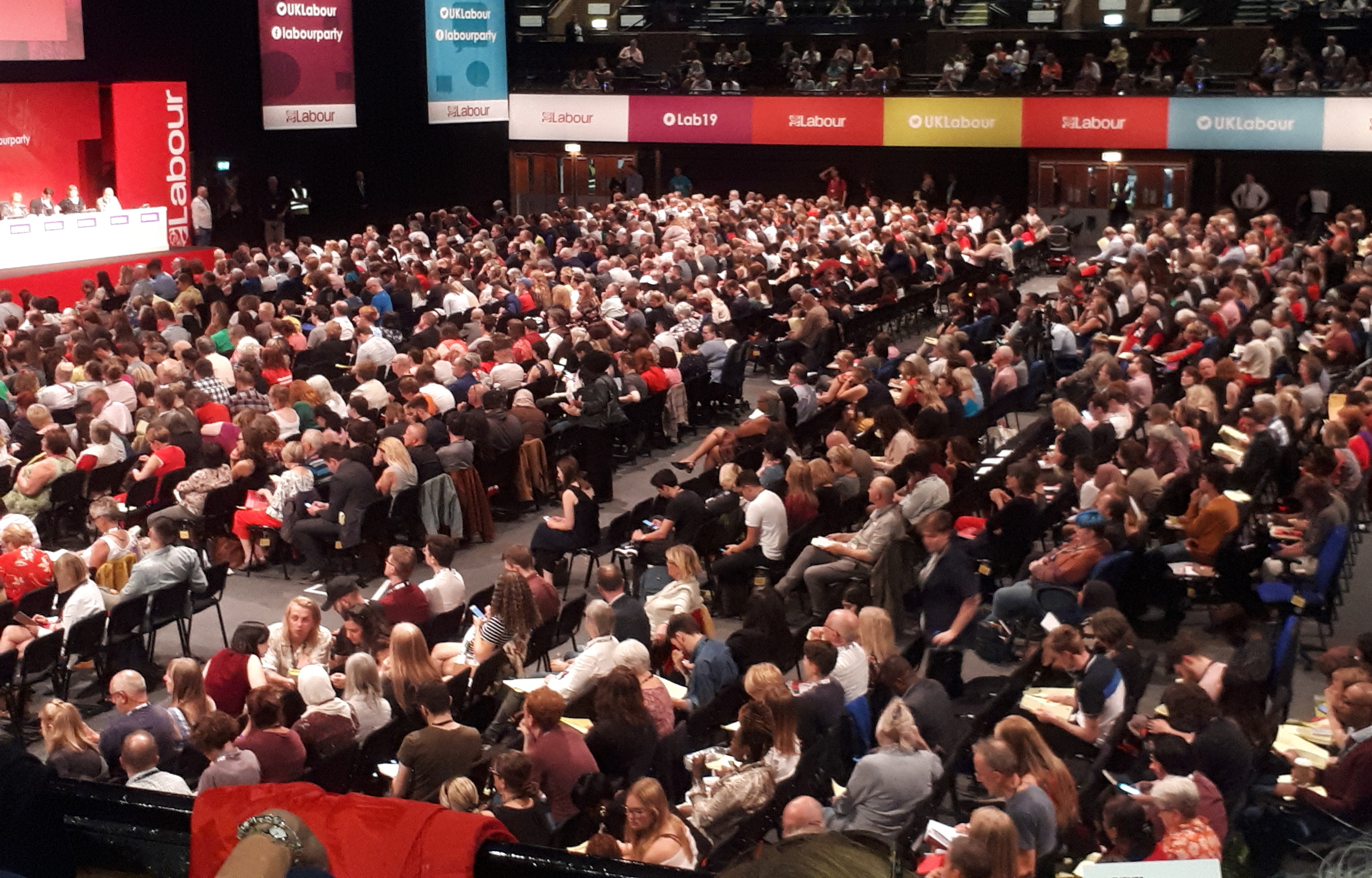 Editorial: Labour leadership gallops right - …but has nothing to offer to workers. The removal of Richard Leonard as Labour leader in Scotland, reportedly through the intervention of a handful of
Editorial: Labour leadership gallops right - …but has nothing to offer to workers. The removal of Richard Leonard as Labour leader in Scotland, reportedly through the intervention of a handful of Mick Brooks, 1948-2021, an obituary - A great loss to the labour movement By the Editor It is with great sadness that we have heard of the death from Covid, of
Mick Brooks, 1948-2021, an obituary - A great loss to the labour movement By the Editor It is with great sadness that we have heard of the death from Covid, of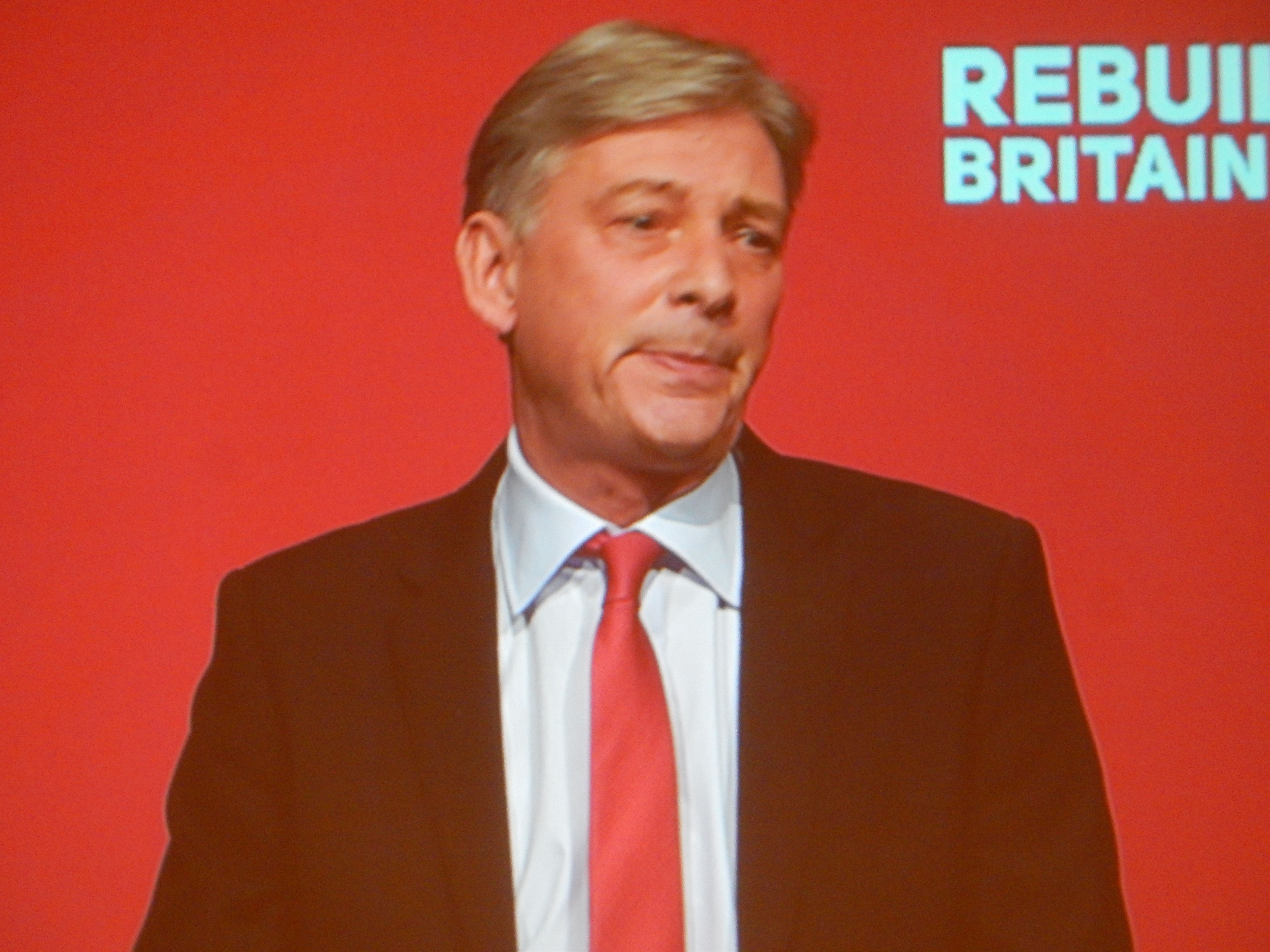 Scottish Labour: right wing moves against Leonard - The experts in ‘annihilation’ are back By GRAY ALLAN , Falkirk Labour member Five months after the right wing in Scottish Labour failed in their
Scottish Labour: right wing moves against Leonard - The experts in ‘annihilation’ are back By GRAY ALLAN , Falkirk Labour member Five months after the right wing in Scottish Labour failed in their Labour disciplinary process ‘not fit for purpose’. Labour activists go to High Court - By Mike Howard, Hastings and Rye Labour member Seven members of the Labour Party including me have filed a claim in the High Court in
Labour disciplinary process ‘not fit for purpose’. Labour activists go to High Court - By Mike Howard, Hastings and Rye Labour member Seven members of the Labour Party including me have filed a claim in the High Court in

